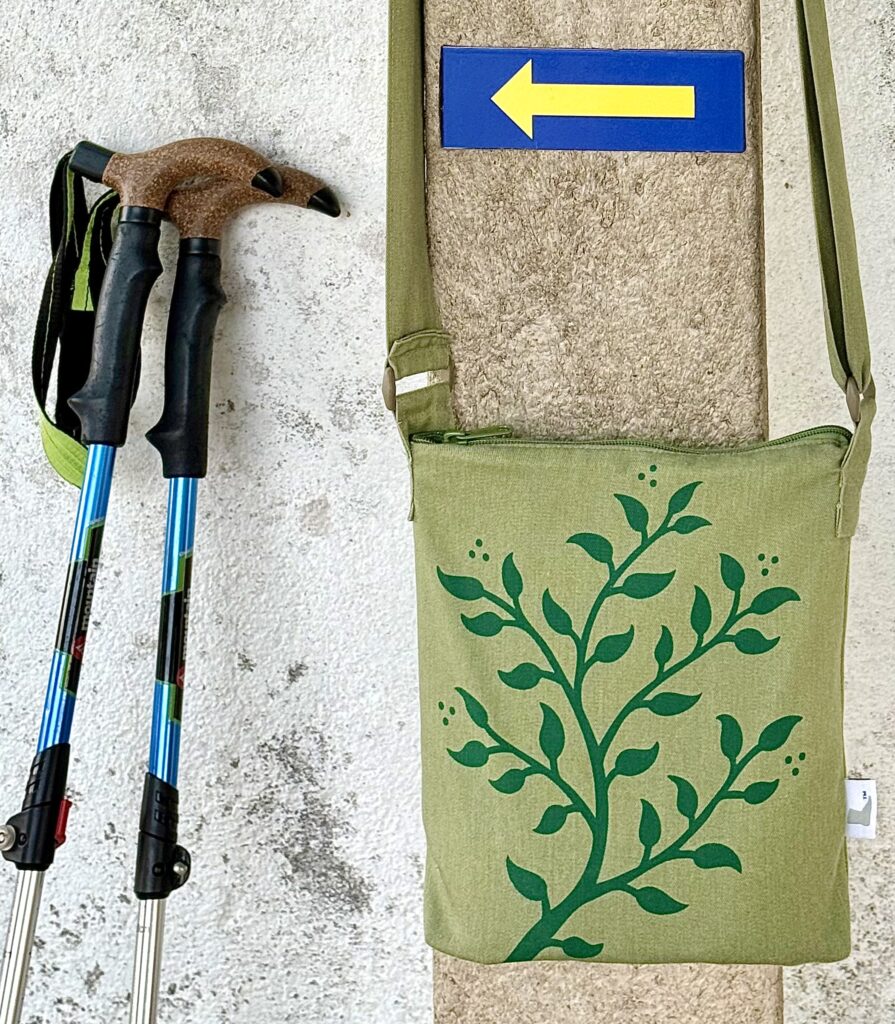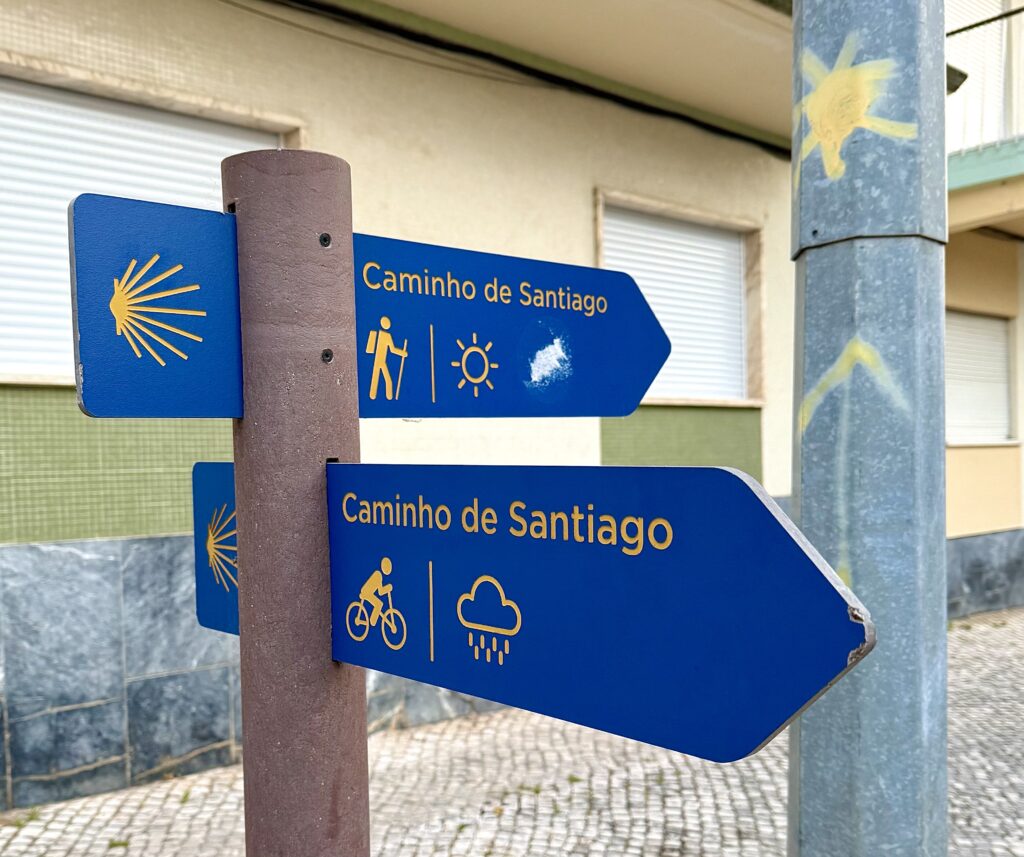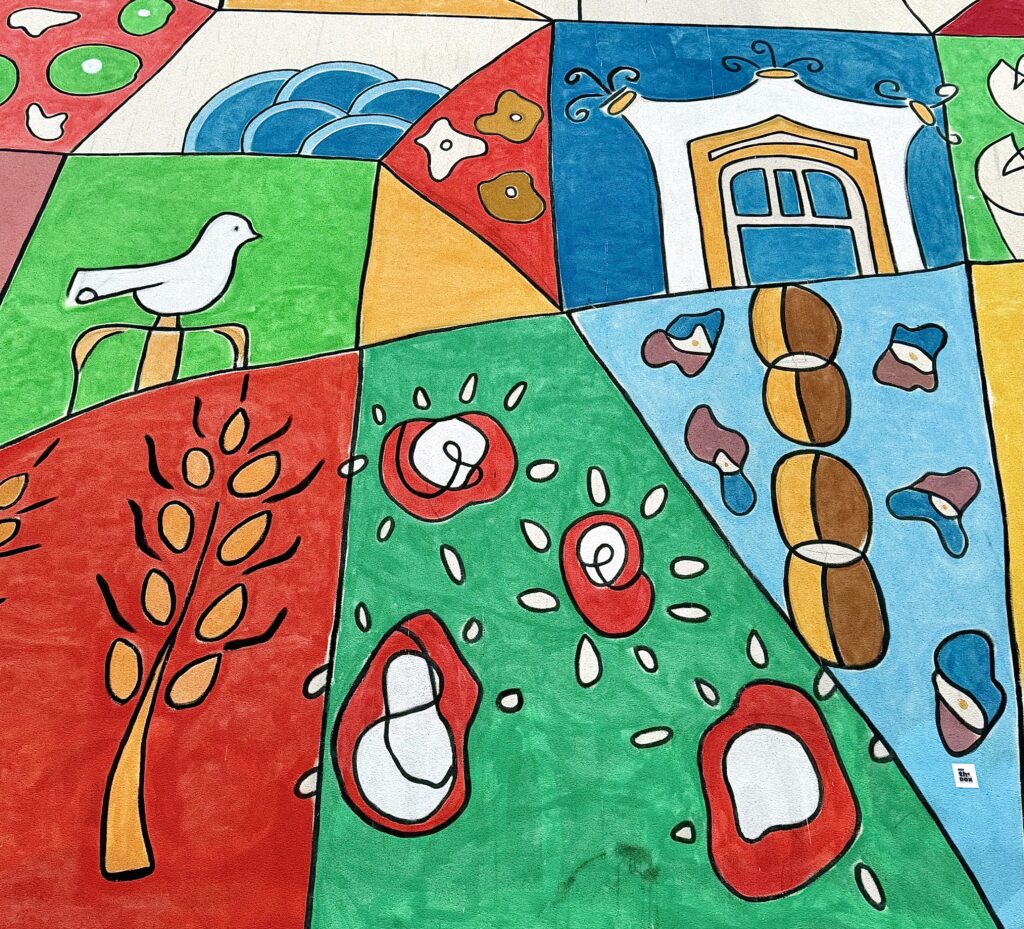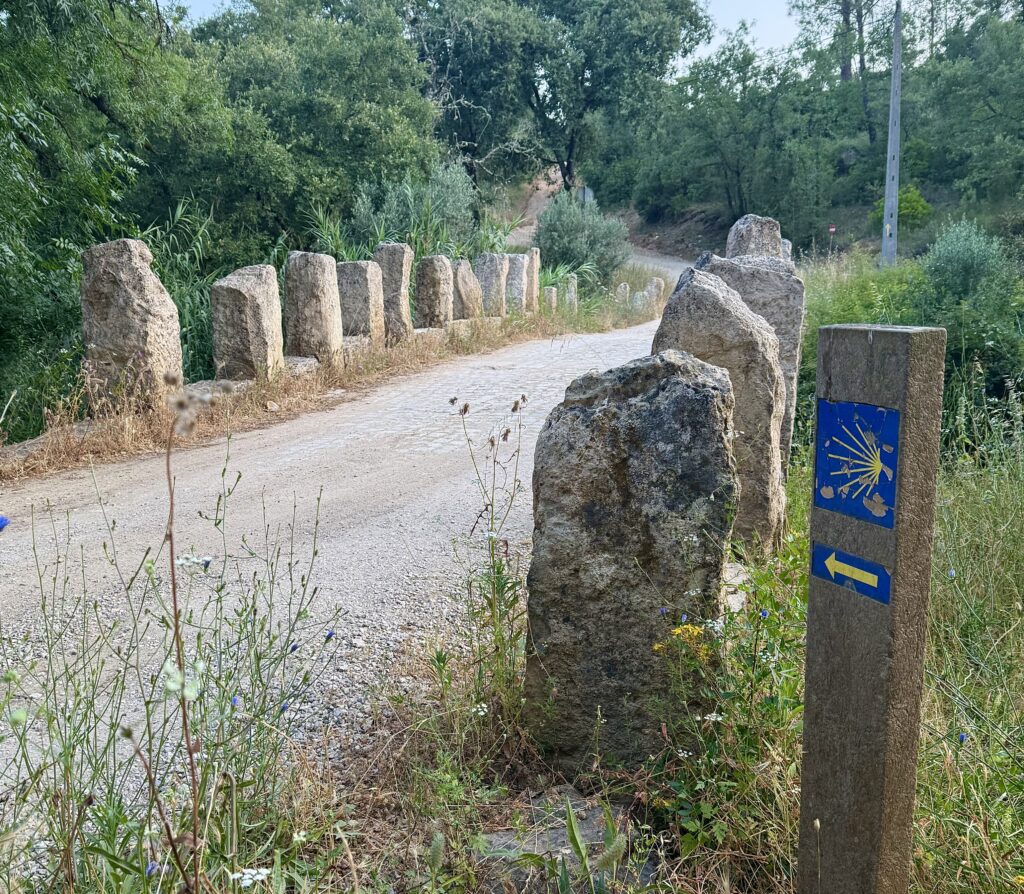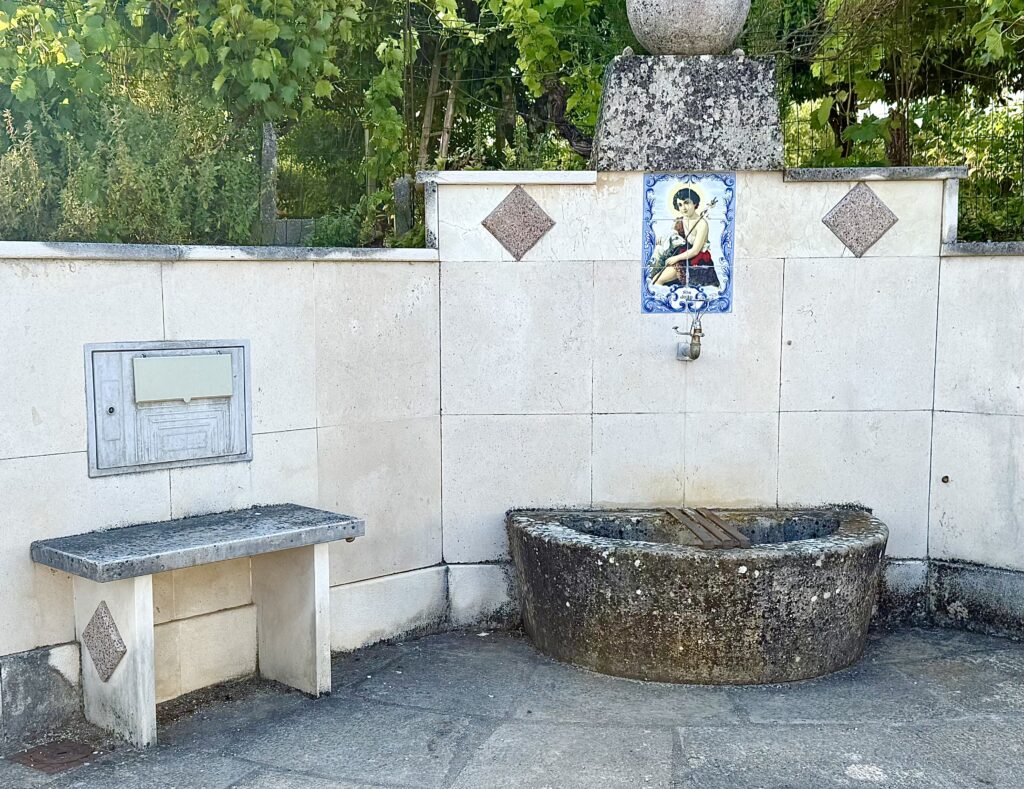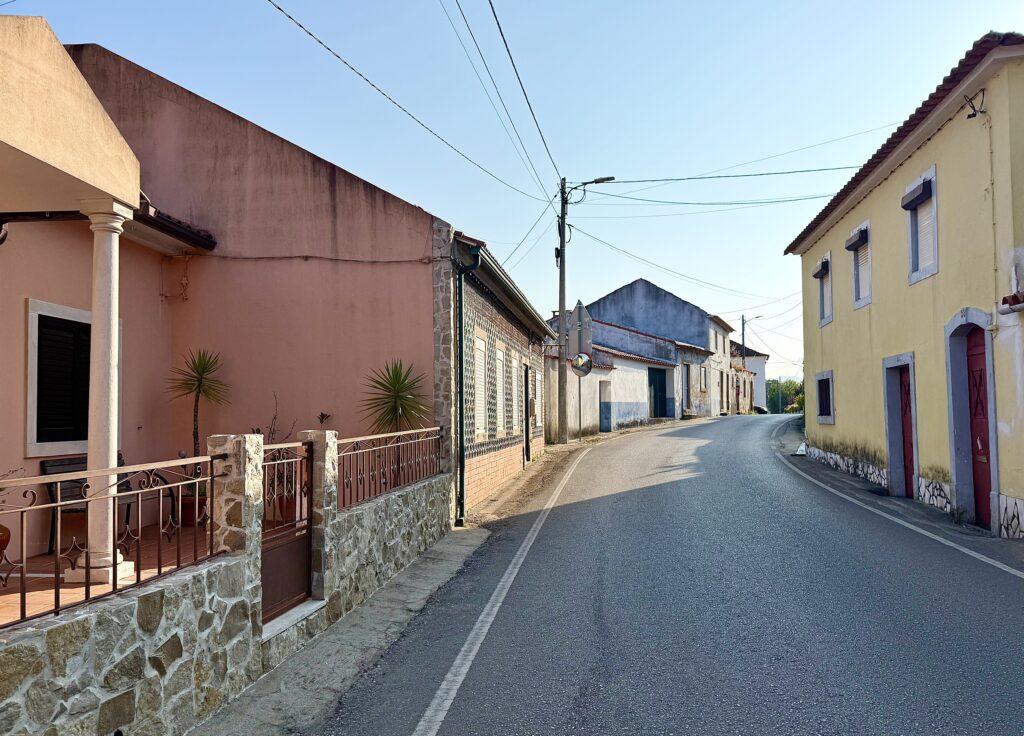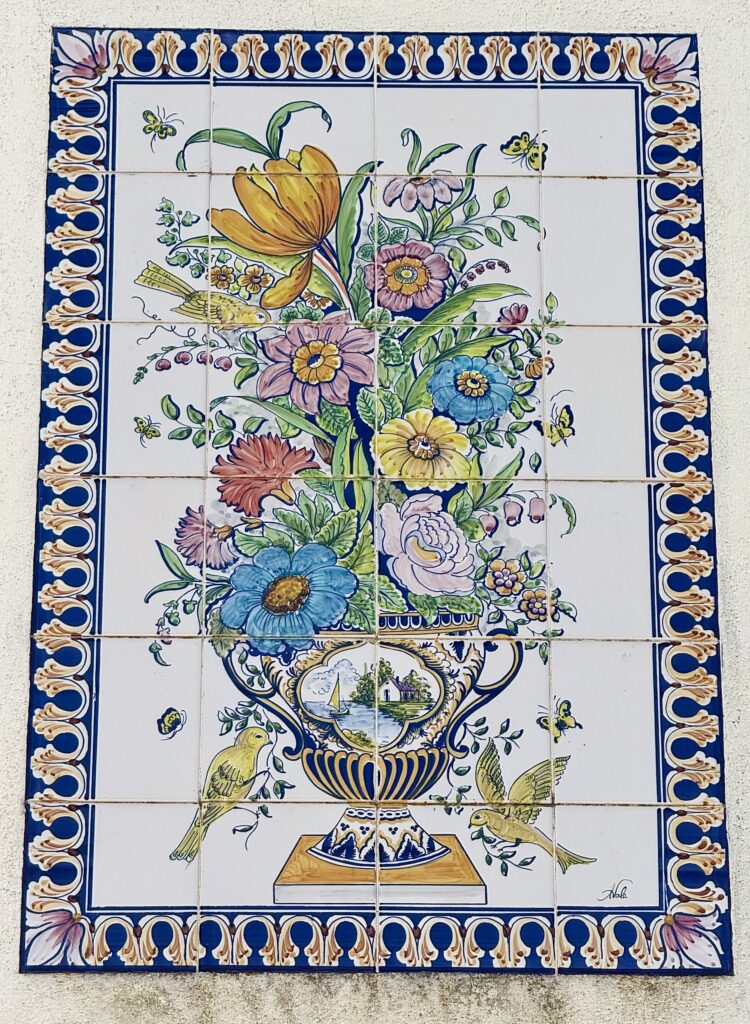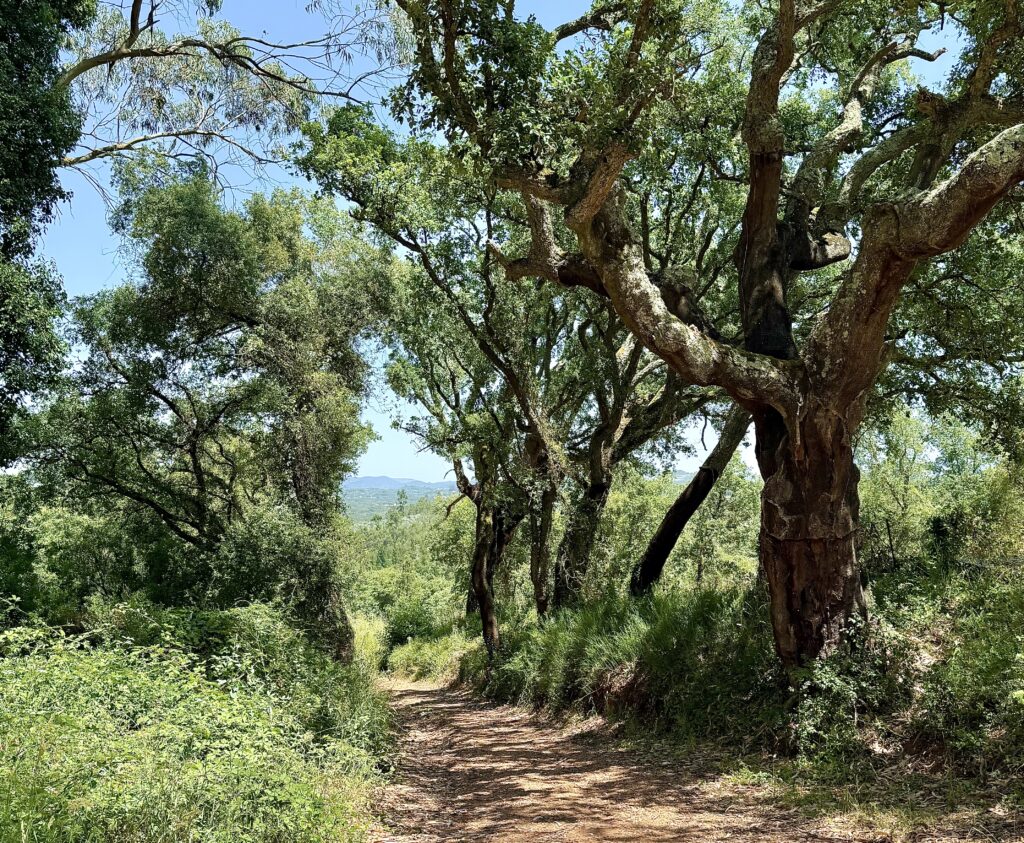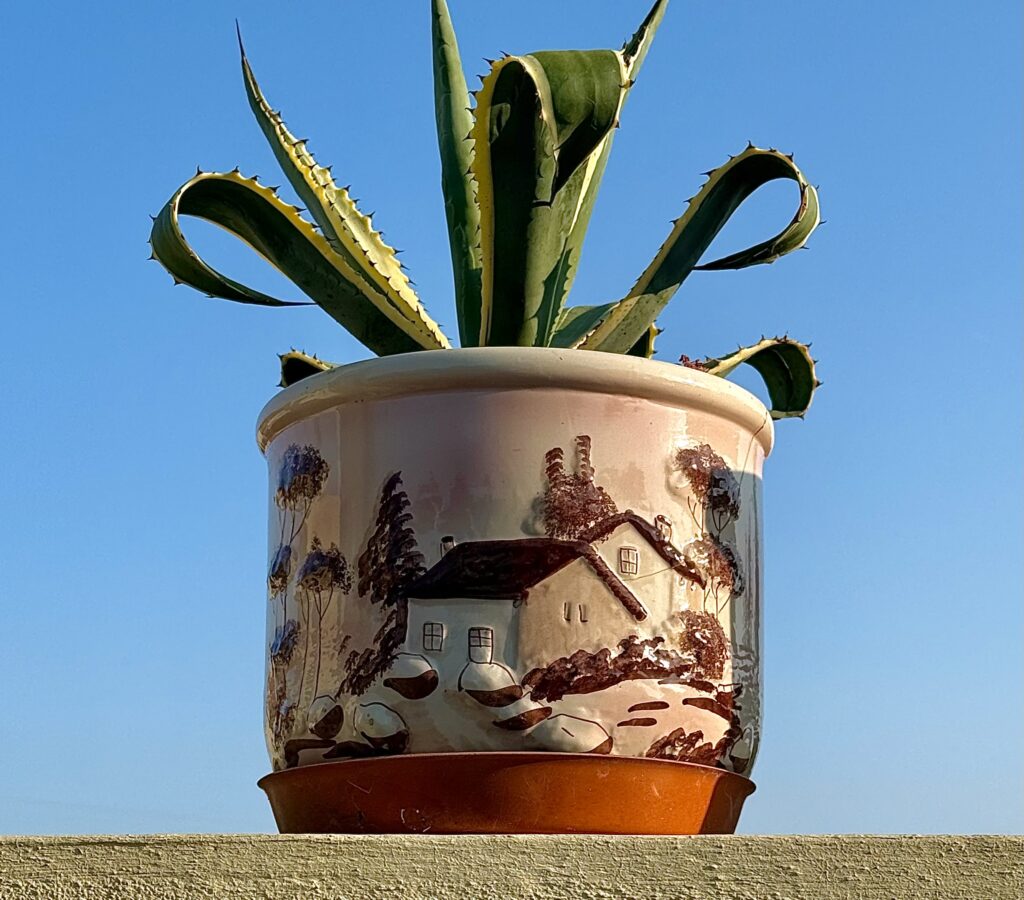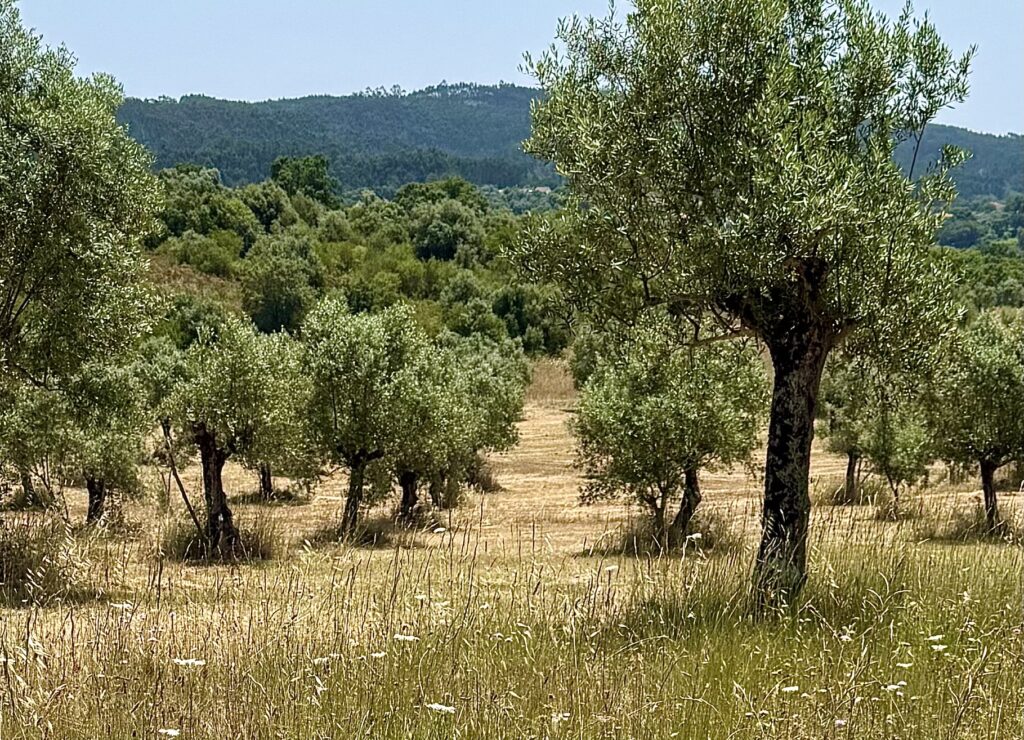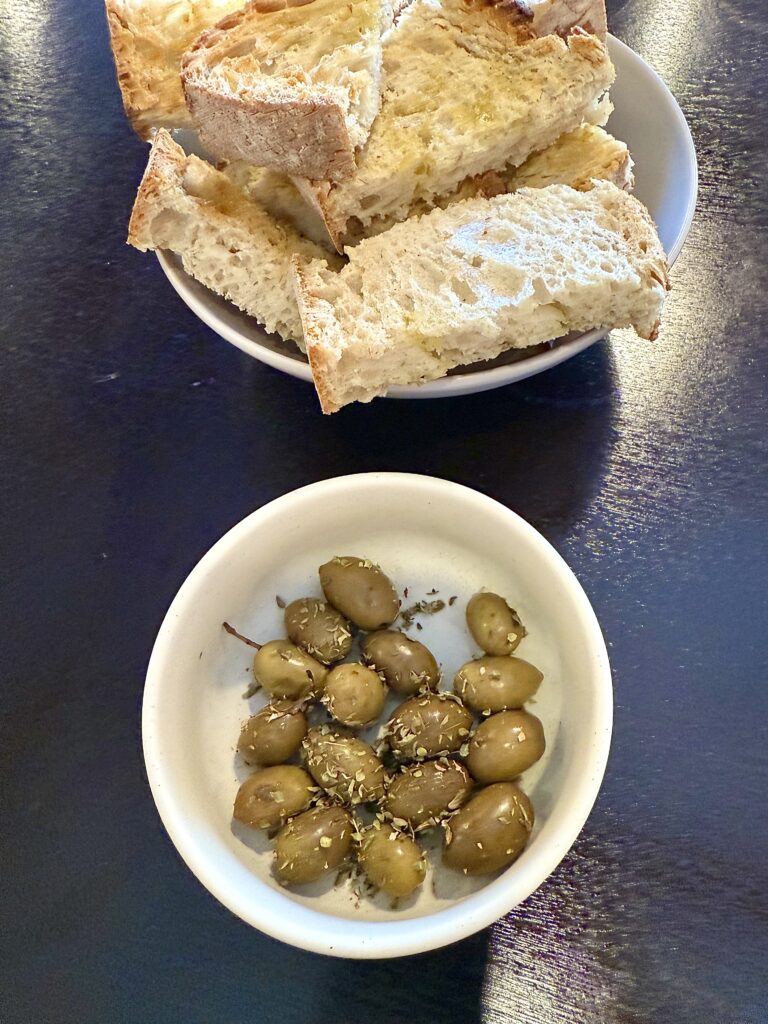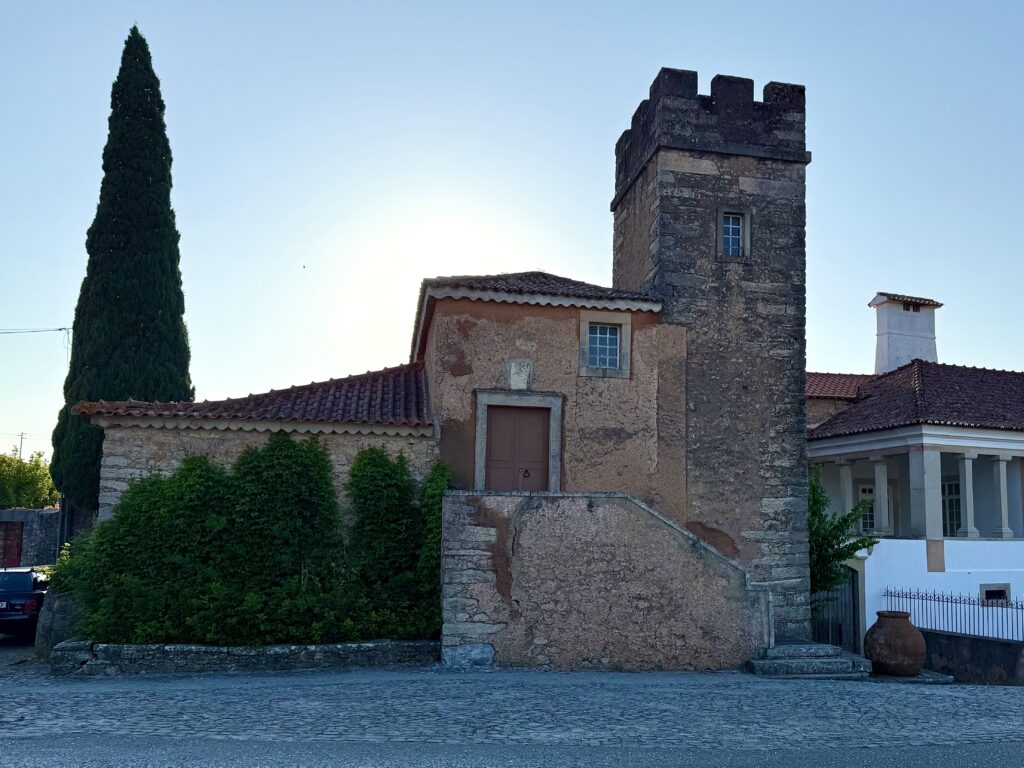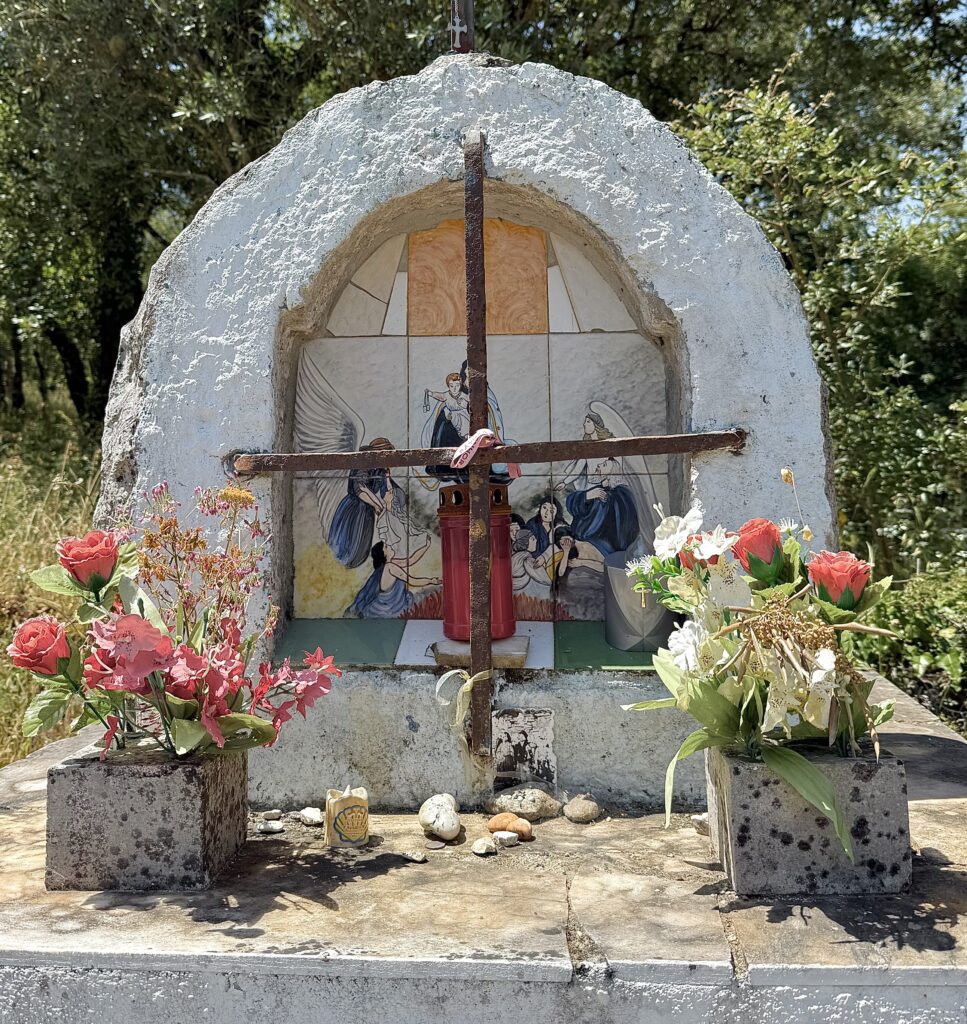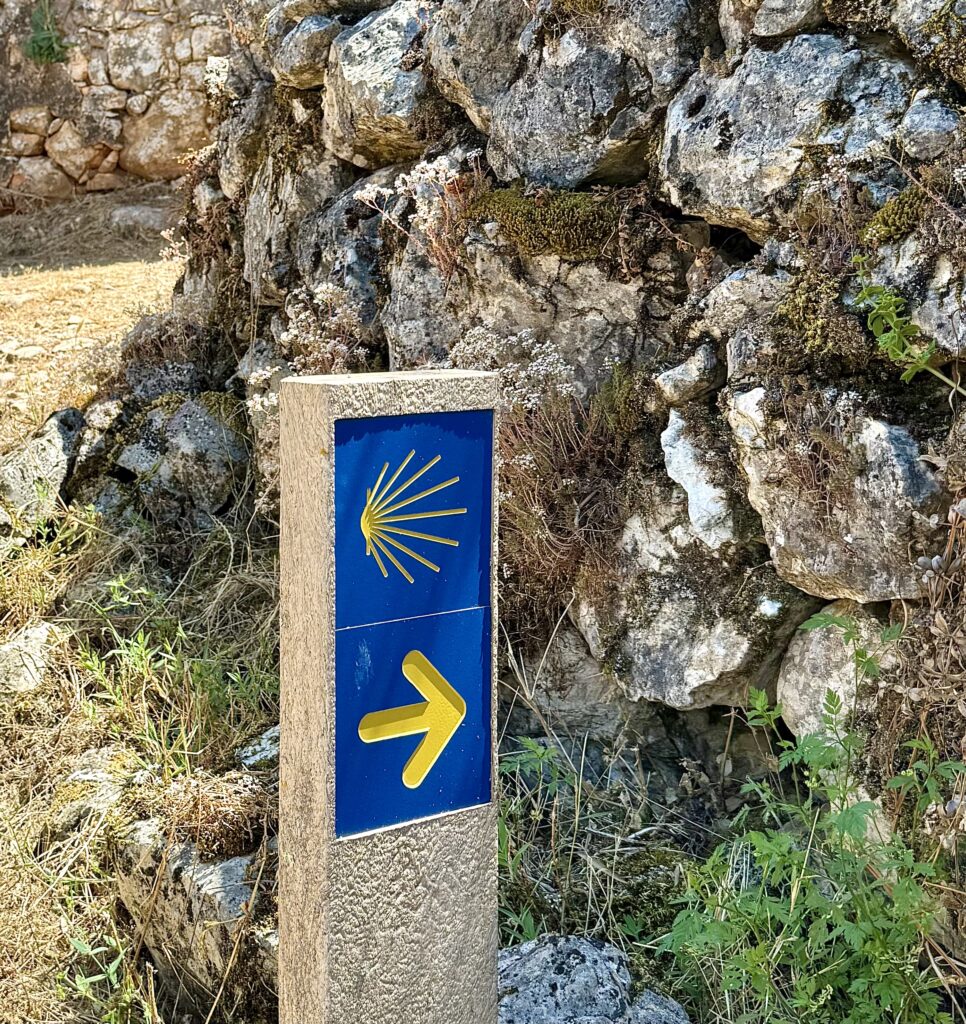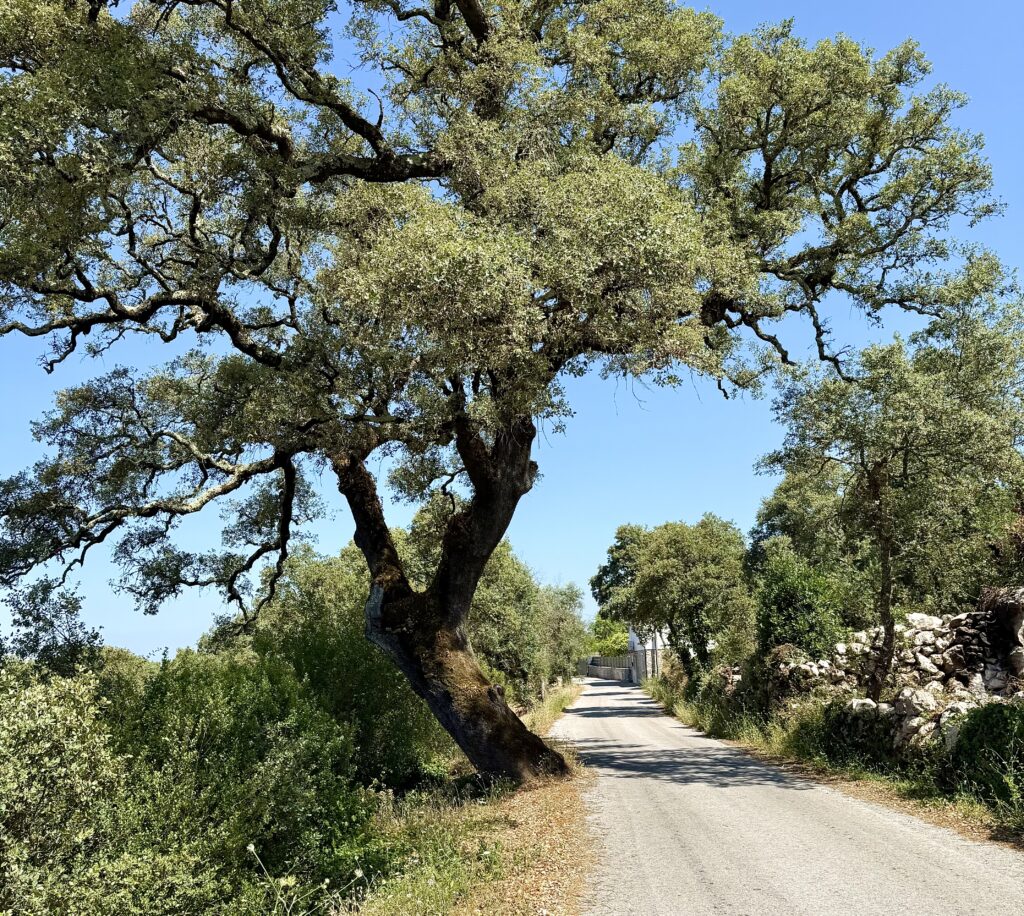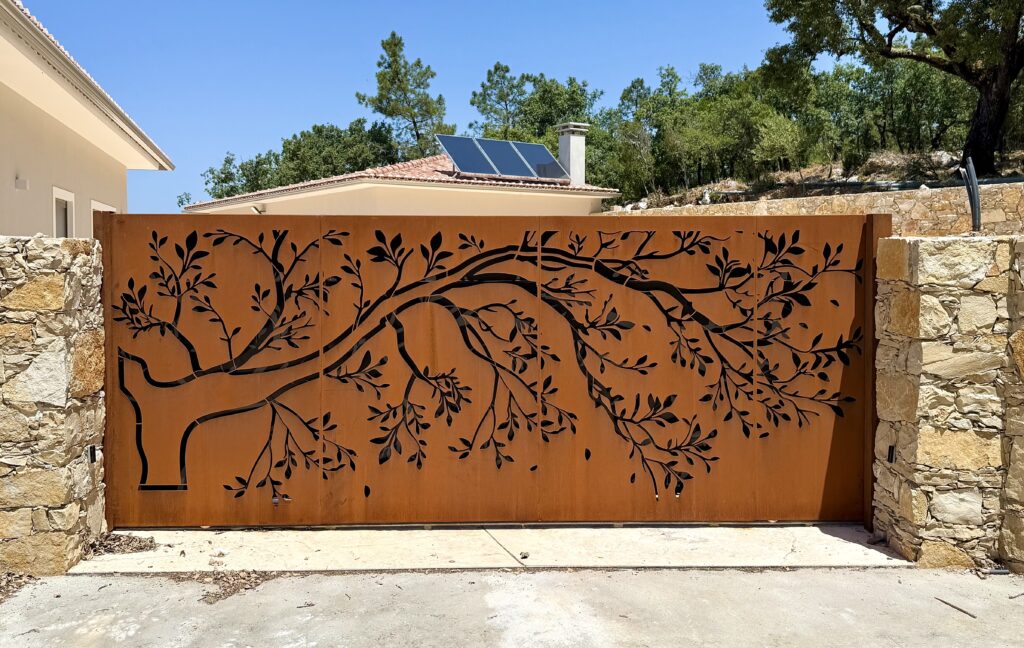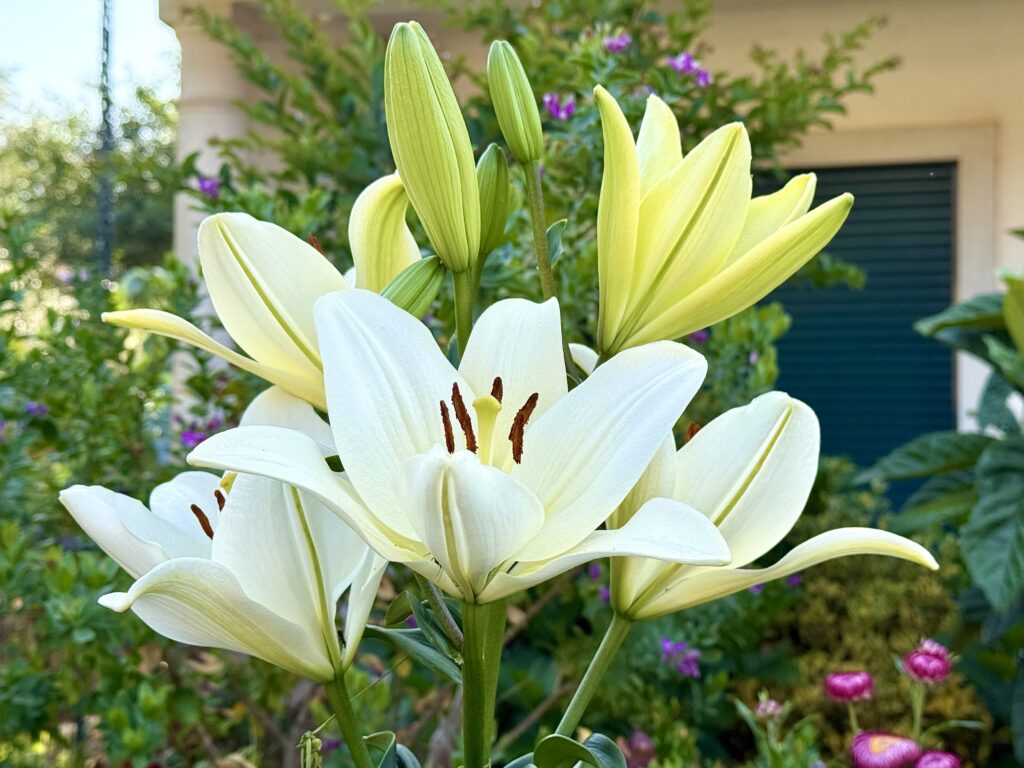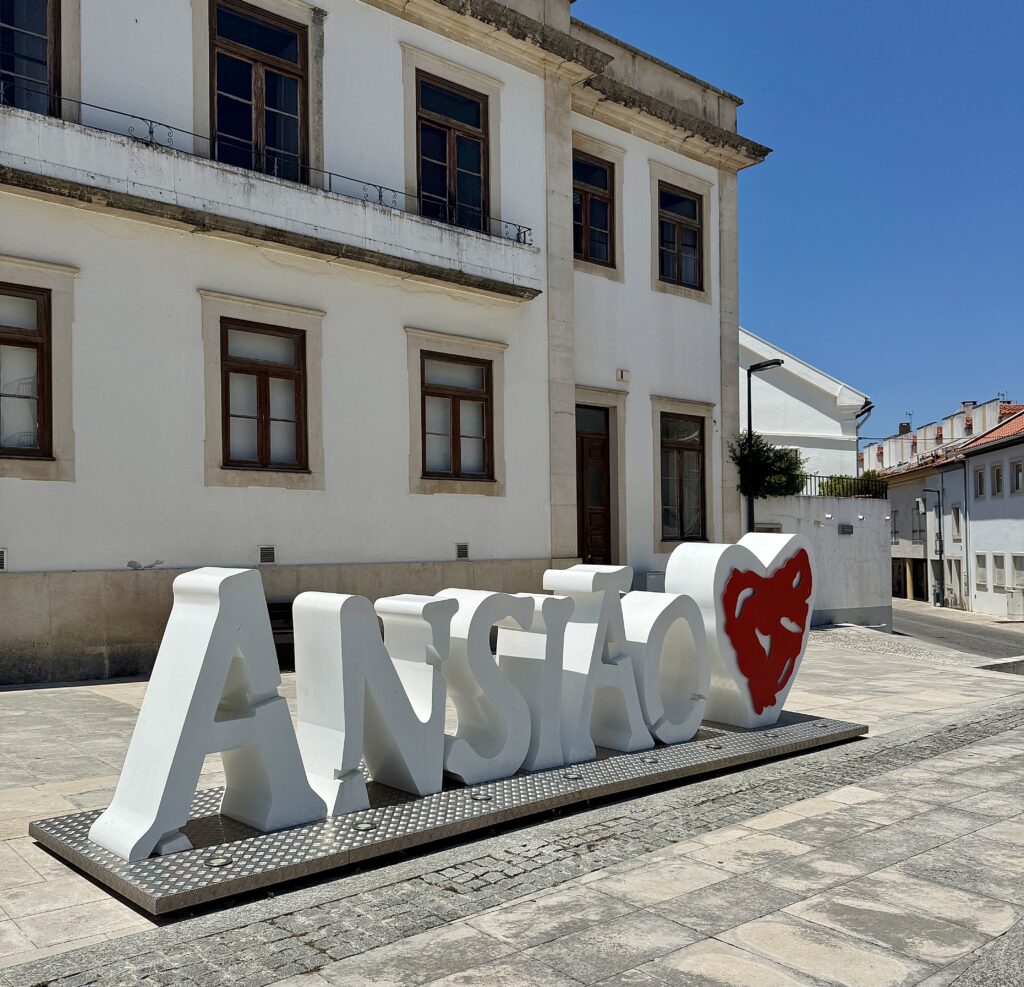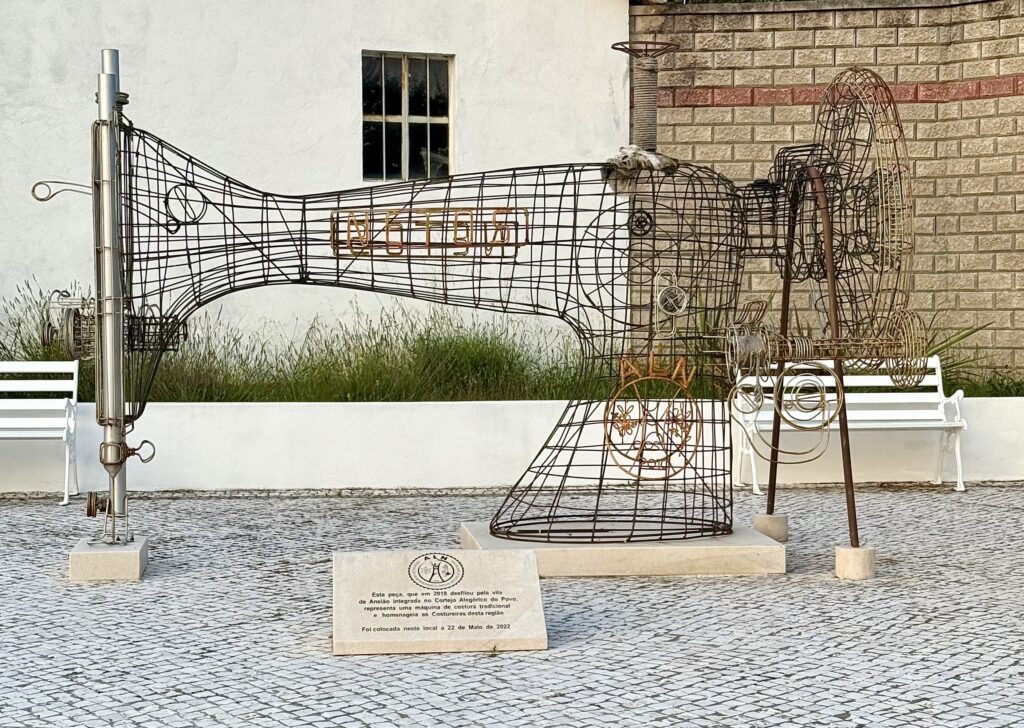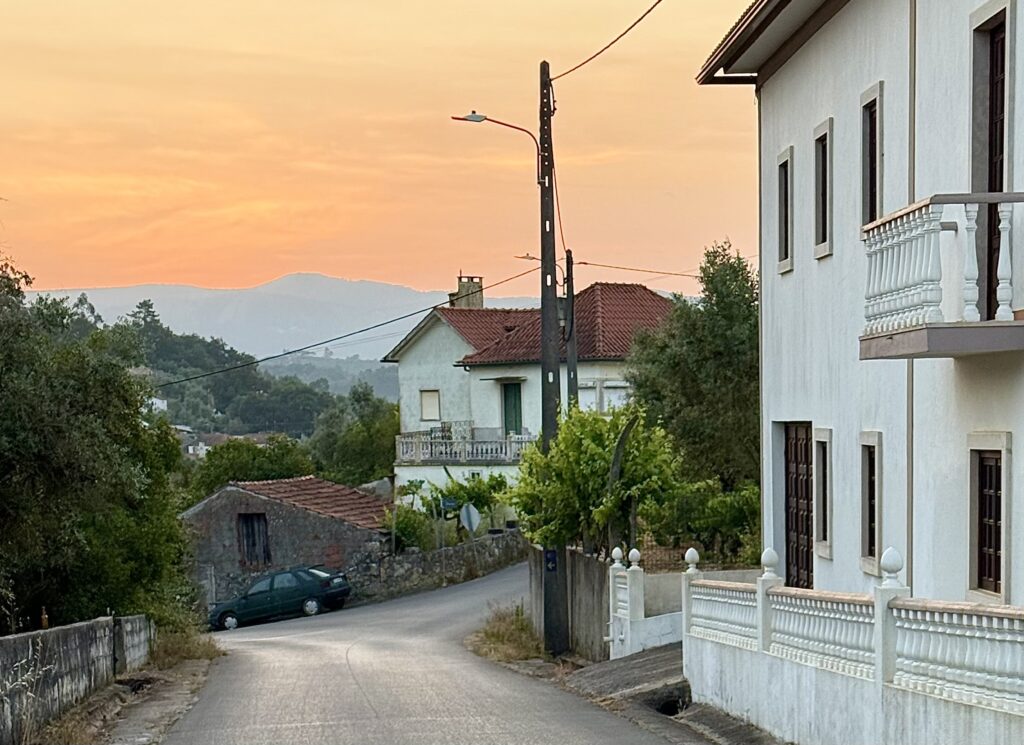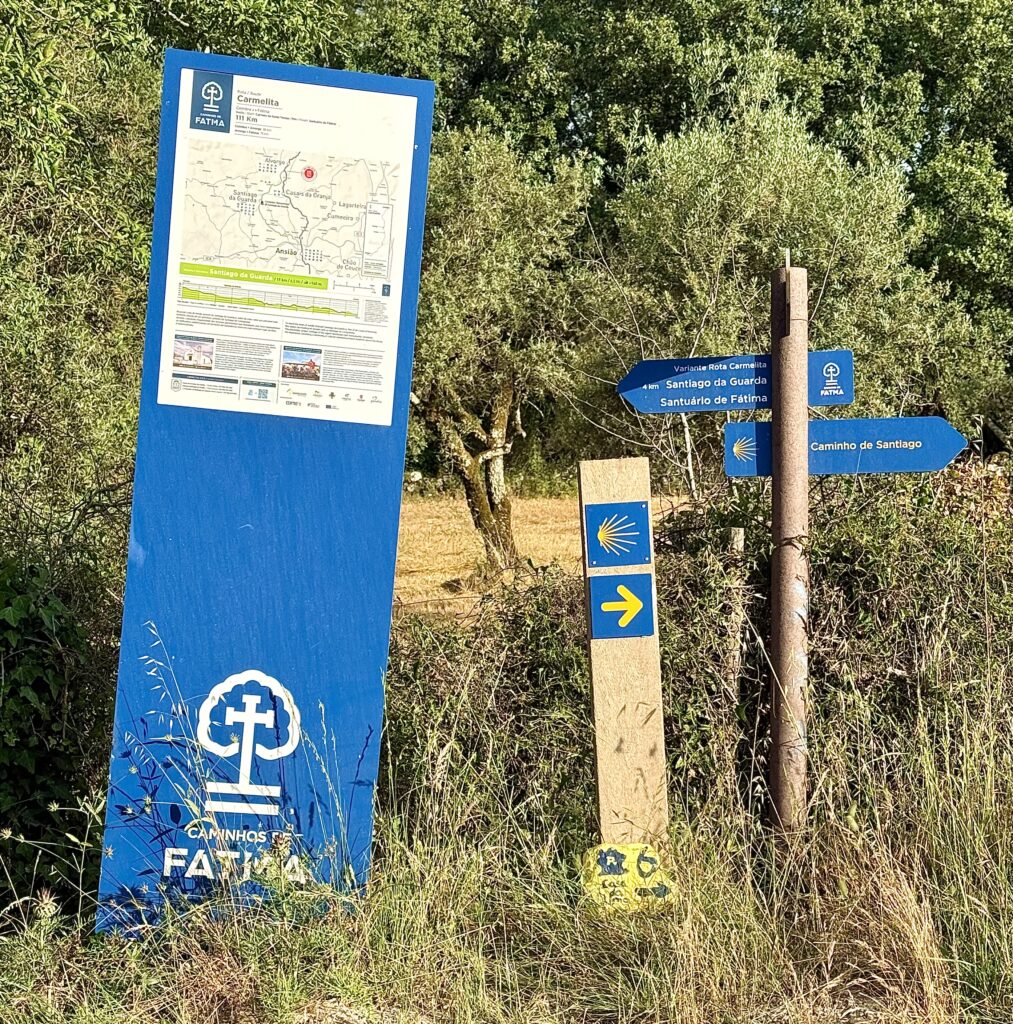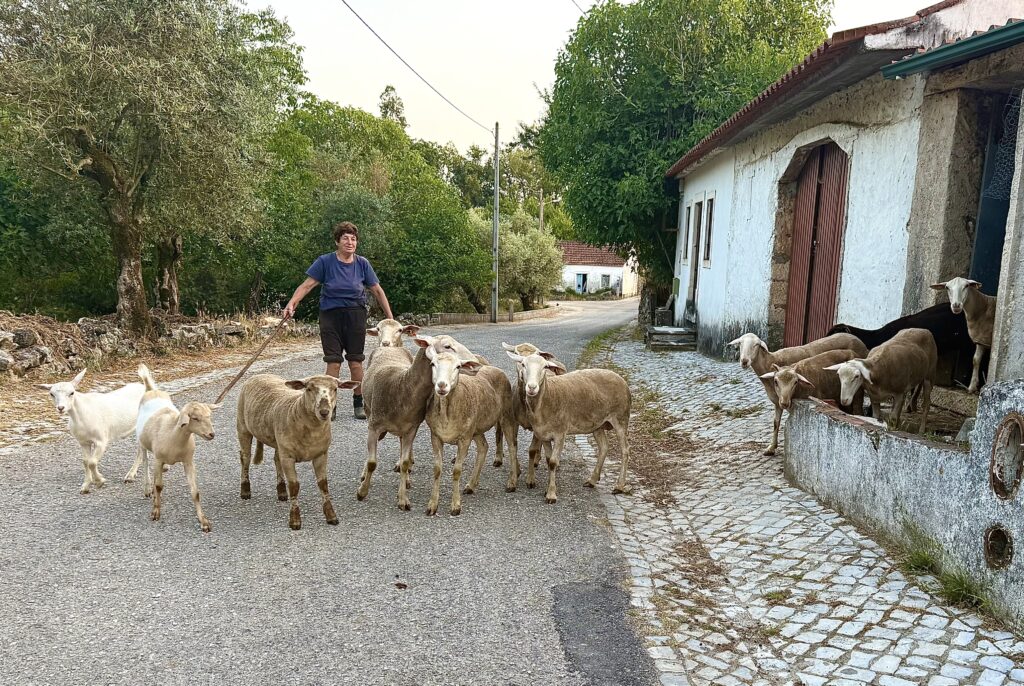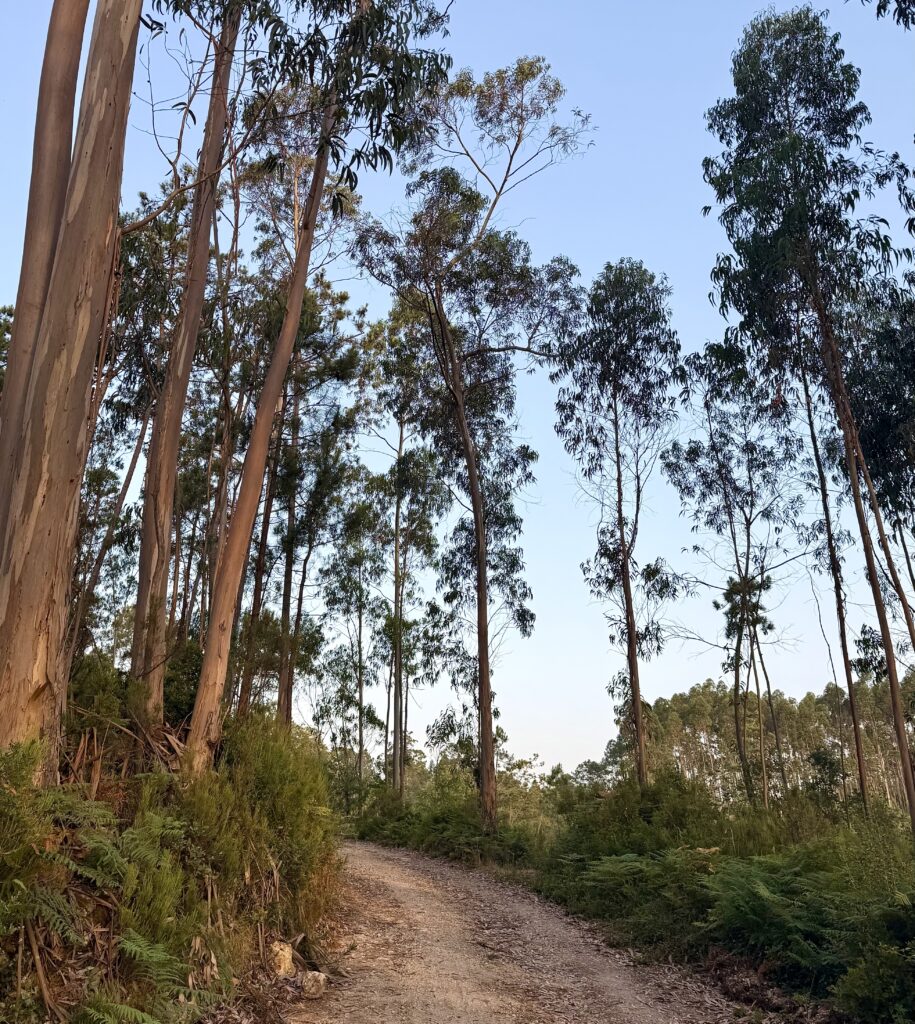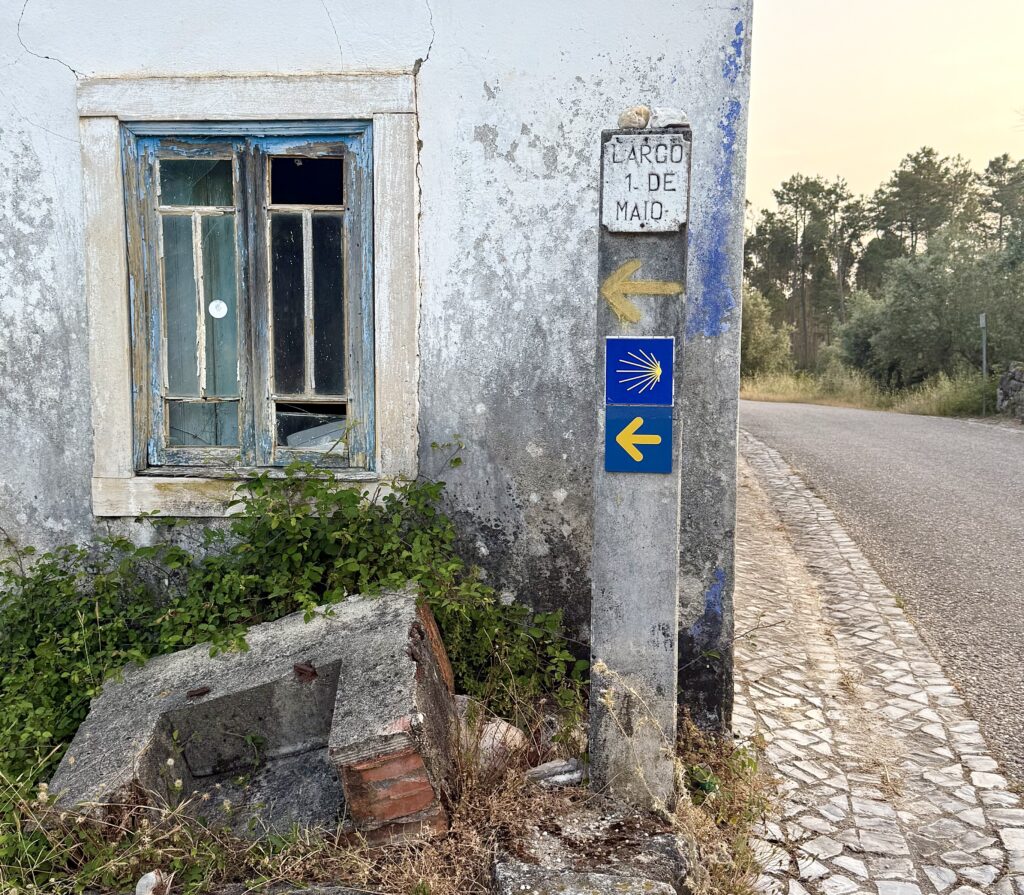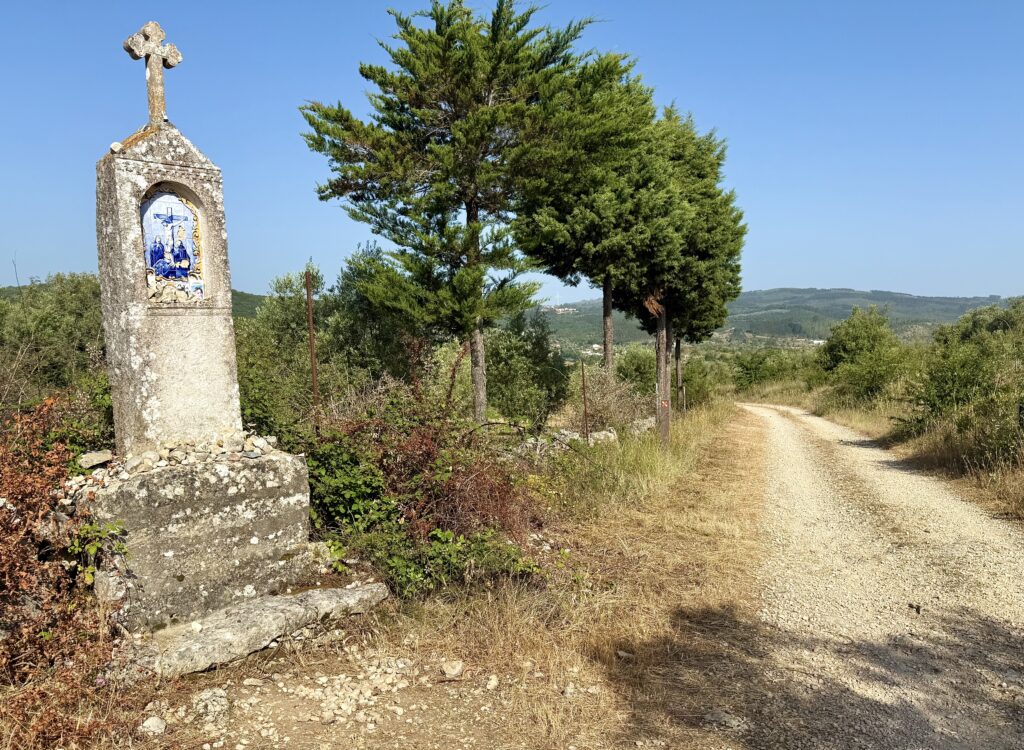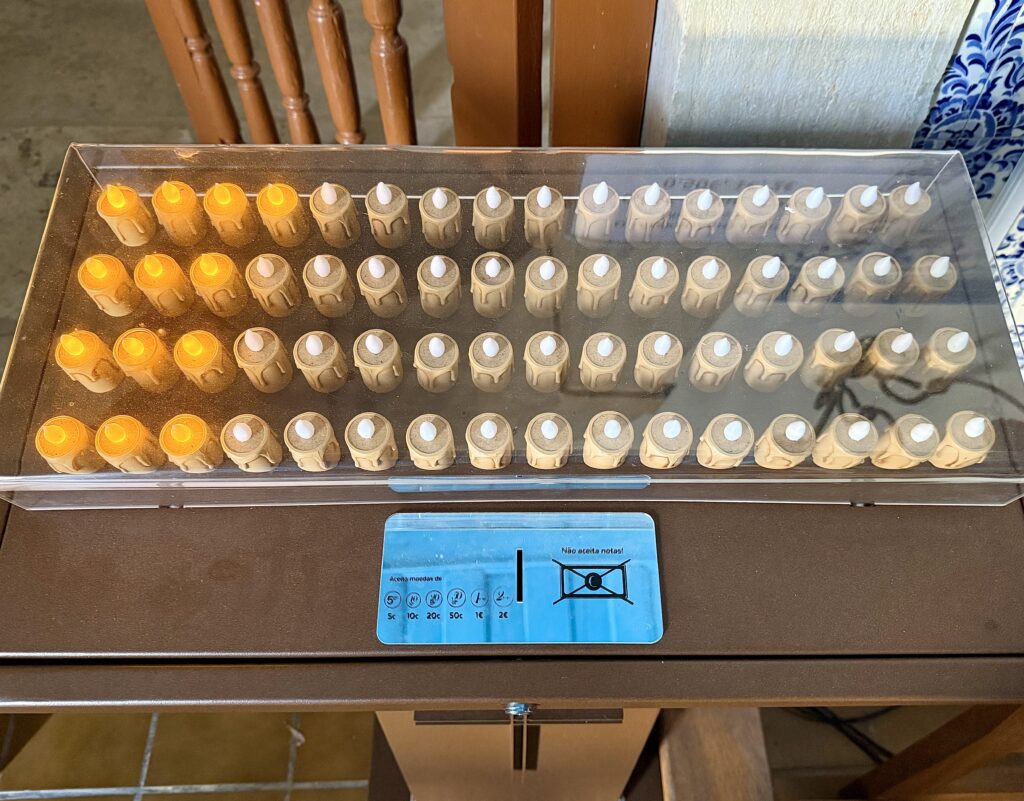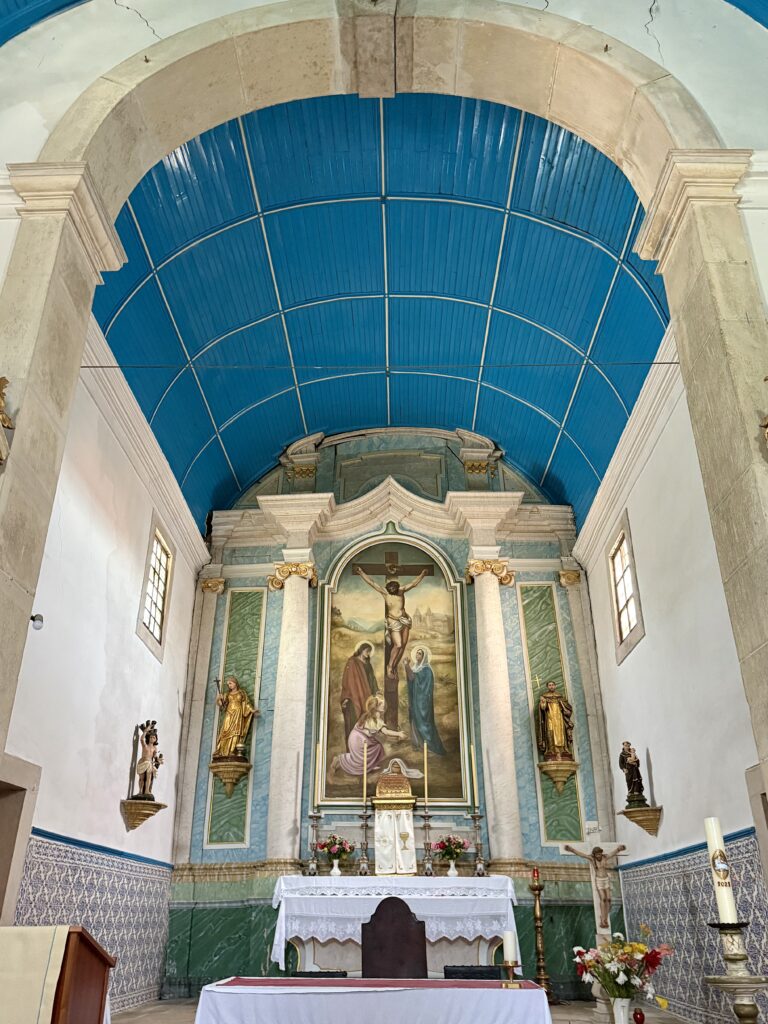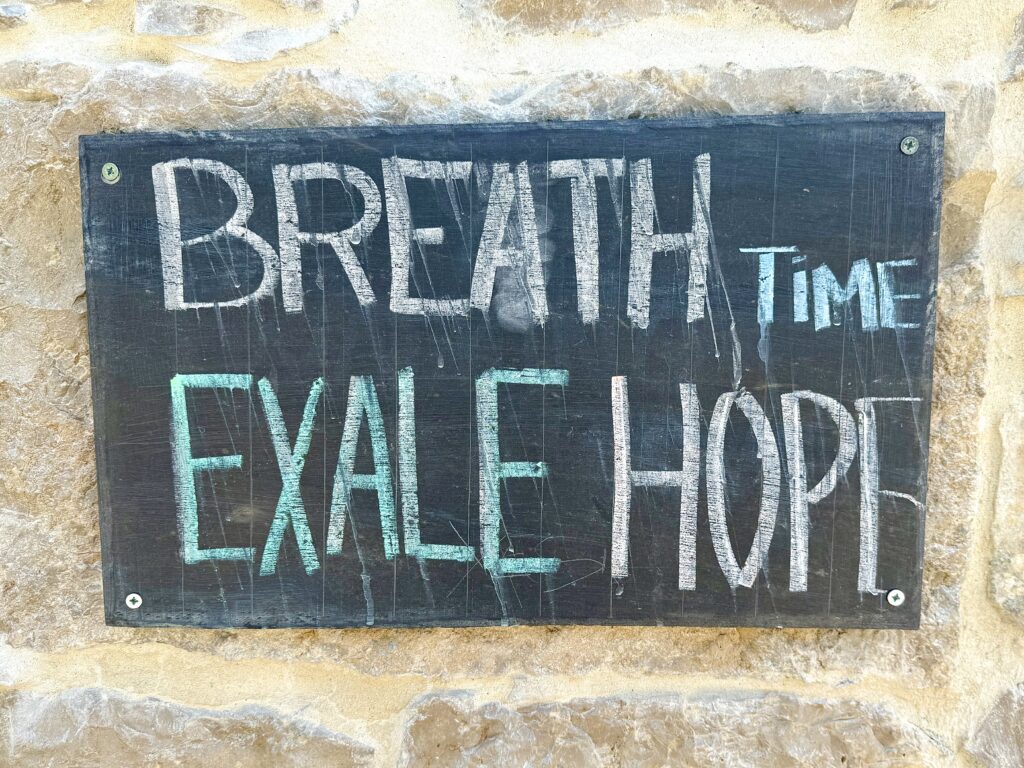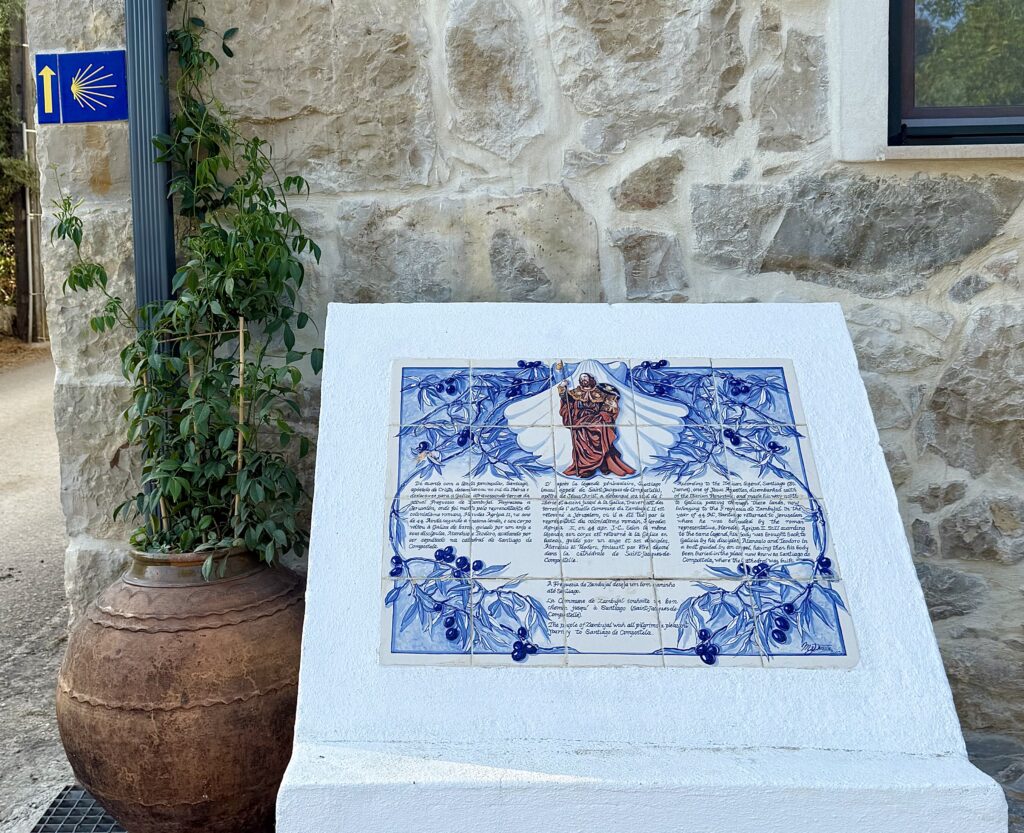Bom Dia & Bom Camino! In June 2025 I continued my walk on Camino Portuguese from Lisbon to Porto. Last year I had a week to walk as far as Tomar (blog posts begin with Part 1), and this year I began from there. Both walks are an extension of when Dad & I walked from Porto to Santiago in 2022 (Part 1).
The distance totaled about 150 miles and took 10 days to cover plus a rest day in Coimbra, a lovely city with Portugal’s oldest university. The itinerary included: Cortica, Ansiao, Zambujal, Coimbra, Sernadelo, Agueda, Albergaria-a-Nova, Sao Joao da Madeira, & Grijo.
This year a heatwave hit Portugal the week I arrived for the walk (last year’s walk involved some hot days too). Very early morning starts were needed on the 90+ degree days, & I tried to reach daily destinations by noon/early afternoon to avoid the hottest part of the day. It always felt good to arrive, shower, and ‘chill.’
Landscapes encompassed olive & eucalyptus tree groves, forest lanes, cobblestoned streets, and roadways connecting small towns. The route is a quieter Camino, and like last year, I met only a handful of other pilgrims, including solo women walkers from Argentina, Germany, & Peru.
The Green Foliage Bag carried my essentials, including sunscreen, iPhone, guidebook, Euros for cafe stops, and Credential. For info regarding Credencials and stamps (or sellos) that are part of walking a Camino check out The Camino de Santiago, Part 1.
Snapshots from the first three days:
Two markers in Tomar, which way to go? Straight ahead led the trail along a river and was recommended in sunny weather — the path to the right directed walkers (and cyclists) through town and was advised during rainy weather. Although it wasn’t raining, I chose the ‘cloudy’ direction to find a cafe for breakfast (no luck).
A mural brightened a school building on the way out of Tomar.
Camino marker by 16th c. Ponte de Peniche bridge with big stone ‘rails’ directs walkers beyond Tomar.
Walkers could fill water bottles at a fonte in Casais — public fountains such as this one usually indicate when the water isn’t potable. For more info about hydration on Caminos see Camino Resources: Planning a Walk, Part 2.
8:00 a.m. through Soianda, one of the small towns on Day 1 to Cortica.
Tile design on a casa — a common decoration found on homes & public buildings
The walk to Cortica encompassed dirt roads and some road walking. I took an alternative path through Areias, which added almost two miles but included scenic stretches away from paved roads.
Succulent catching rays
Dry grass & wildflowers surrounded olive trees.
My lodging in Cortica, Quinta da Cortica, was an old family property with an albergue plus private rooms available. Dinner included olives from the property and bread drizzled with olive oil.
The sun shined over the albergue in the morning as I left Cortica for the next stop of Ansiao.
Many shrines appeared by casas, along roadsides, or in towns — some of these shrines included flowers (real or imitation), rocks, candles, & mementos.
Markers in this part of the Camino included slender stone slabs or wood posts with arrows & shell tiles.
A tree design on a casa’s gate looked familiar : )
Lovely lilies in a yard
A plaza in Ansiao displayed the town’s name.
A large sewing machine sculpture paid tribute to Ansiao’s history with textiles.
Early morning orange out of Ansiao on Day 3 to Zambujal — the air felt comfortably cool at this time.
Signs for Fatima sometimes accompanied Camino markers, but this pilgrimage trail headed in the opposite direction. The signpost shown pointed “Camino de Santiago” to the right, “Santuario de Fatima” to the left.
Goats heading out to pasture — they looked me over as I passed by.
Larger shrines can appear “out in the middle of nowhere” along The Way — this one was near Alvorge.
Candles glowed at Igreja Parochial do Rabacal in Rabacal, the town before Zambujal.
The church, originally constructed in the 16th c., was renovated in the late 18th c. — the altar’s aqua painted ceiling may be associated with the Portuguese tradition of blue azulejo tiles as seen on the walls.
Inspiration was offered at my Zambujal lodging, Casas das Retortas, run by a family with deep Camino ties. Their property includes a marker with the legend of St. James in Portuguese, French, & English.
Next: More heat, lovely towns, and taking a rest day in Coimbra
Coming soon — Tomar to Porto, Part 2

